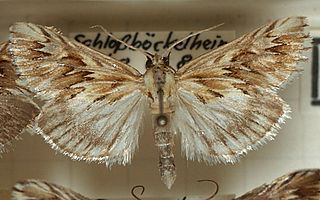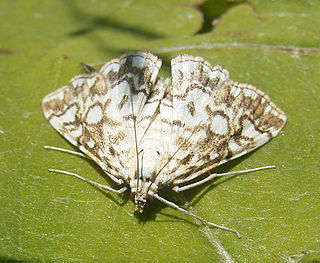
Crambinae is a large subfamily of the lepidopteran family Crambidae, the crambid snout moths. It currently includes over 1,800 species worldwide. The larvae are root feeders or stem borers, mostly on grasses. A few species are pests of sod grasses, maize, sugar cane, rice, and other Poaceae. The monophyly of this group is supported by the structure of the tympanal organs and the phallus attached medially to the juxta.
Argyractis is a genus of moths of the family Crambidae.

Bradina is a genus of moths of the family Crambidae.

Cirrhochrista is a genus of moths of the family Crambidae described by Julius Lederer in 1863.

Cynaeda is a genus of moths of the family Crambidae.

Eoophyla is a genus of moths of the family Crambidae. It was erected by Charles Swinhoe in 1900.

Herpetogramma is a genus of moths of the family Crambidae described by Julius Lederer in 1863. It currently comprises 106 species and is found in North America, Eurasia, Australia, New Zealand, Central and South America. Of the few species where host plants are known, the larvae mostly feed on grasses.

Lamprosema is a genus of moths of the family Crambidae described by Jacob Hübner in 1823.
Undulambia is a genus of moths of the family Crambidae.
Piletocera is a genus of moths of the family Crambidae. The genus was first described by Julius Lederer in 1863.

Hydrelia is a genus of moths in the family Geometridae erected by Jacob Hübner in 1825.

Cataclysta is a genus of moths described by Jacob Hübner in 1825.

The Chrysauginae are a subfamily of snout moths. They are primarily Neotropical and include about 400 described species.
Macna is a genus of snout moths. It was described by Francis Walker in 1859.

Acentropinae is a fairly small subfamily of the lepidopteran family Crambidae, the crambid snout moths. Species of this subfamily are exclusively found in wetlands and aquatic habitats.









